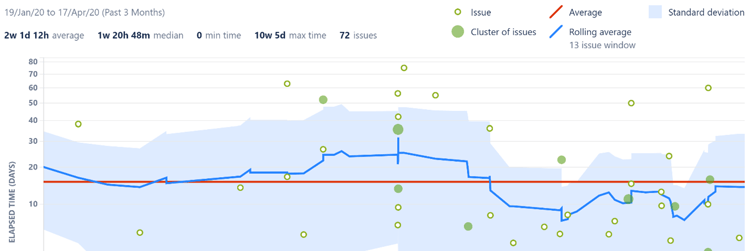Bringing together in-country expertise and client domain experience with the Atlassian know-how.
How do you deliver a more dynamic, targeted, and, well, interesting training environment compared to standard training and certification offerings?
There are a wide range of training programs available for Atlassian products such as Confluence and Jira, webcasts, self-guided training, certification exam training, YouTube channels – yet, they all have one thing in common – they are specifically about the product. Such training programs are anonymous and general, not adapted to the student nor the instance the student will be using. We call this the last mile - how do we get students from the general to the specific? How do our clients get their employees to use the platform as designed and intended?
Simple: Customize the training to the client instance. Teach the goat-trails. It becomes a specific course tailored to the client’s needs (and not a general overview), to the level they need, and directly to the demands of the Atlassian instance. This is far different from the standard training packages available from the vendor or anyone else.
Where do we start?
In the initial scoping stage, I check with the client if there are any particular use cases that they want us to emphasize. For example, for a Confluence course, it could be something like:
- How to find stuff - Exploiting quick search
- The use and creation of dashboards to support a specific process
- Encouraging the use of labels
- Showcasing the Meeting Templates with simple task tracking
- Creating content! Many people seem to use Confluence mostly as an archive and are resistant to creating content. We help break down that barrier.
What comes next?
The training programs are delivered in a traditional classroom environment, allowing much flexibility. However, virtual classrooms are also used on occasions - especially in the post-pandemic, ‘new normal’. Each class is different, with differing needs. During the icebreaker, you can plan a short quiz matched to the participant’s level (the class mentor explores the areas and matches the delivery to their specific needs). Tease out the main questions the room has, write them up on the whiteboard, and tick them off as they're covered in the given time.
So how do potential students differentiate between the offerings? Typically, we offer both an introductory and an advanced course. The introductory one is designed for newbies - folks who are green to this kind of technology and often hesitant to "get their hands dirty”. Help them understand how it all hangs together and what "furniture" (buttons, devices, fields, labels, etc.) they might find in various areas. The advanced course follows on from the introductory one and offers more meaty portions, making it thought-provoking even for those who have used the platform.
How do we signal a course choice?
Let’s talk about signals. It's important to signal course choice to students. In a recent enterprise example, course recruitment was part of the challenge. The courses were offered from a department, made available for the broader population, who could choose at their will. For example, a student may have used Confluence for a year, but only as a reference site. It’s quite likely they don't know about commenting, labelling, advanced searching or content creation. Clearly, the introductory course would be the place to start for them. To encourage them, we offer a simple quiz (over SurveyMonkey) that tests their essential competency. It helps catch their gaps and recommends a course that fits them best. This is quite effective, as it also signals to the students what to expect, with real questions based on their instance.
How do I do it?
For each session, as an icebreaker, I employ a 10-15 question Kahoot quiz (kahoot.com). With a small prize, of course! This helps to level the classroom, get the competitive juices flowing, and gives some valuable teaching moments. It's the highlight of each course, and it’s surprising just how engaged people become!
Lab: An independent lab instance of Jira & Confluence provides students a worry-free learning environment. I can't stress this enough: be worry-free. Experience has shown that using the company instance, even if we arrange a separate space and project, it raises many issues and in particular, worries the more nervous students. Pertinent examples from the client instance are widely used to encourage boldness in dealing with non-hypothetical situations, which anonymized, general trainings cannot hope to approach.
For example, I will typically use a live Control Chart to examine a chosen project. We're within the client's domain, so no problem there. At one session, a student exclaimed, "That's my old issue I forgot to close!", and the entire class a) laughed good-naturedly and b) immediately recognized the power of the control chart to highlight issues outside of the usual closure standard deviation.

Customizing training to match client’s needs has been a rewarding experience. It has shown that when the course is moulded to fit the client needs – instead of trying to fit everyone into one shape – then goodwill and better skills follow.
Nagarro has an Atlassian Center of Excellence headquartered in Oslo, Norway, & Gurgaon, India. If you would like to learn and discuss more about our Atlassian offerings and services, just write to us.
Check out Nagarro's Virtual Classroom.





